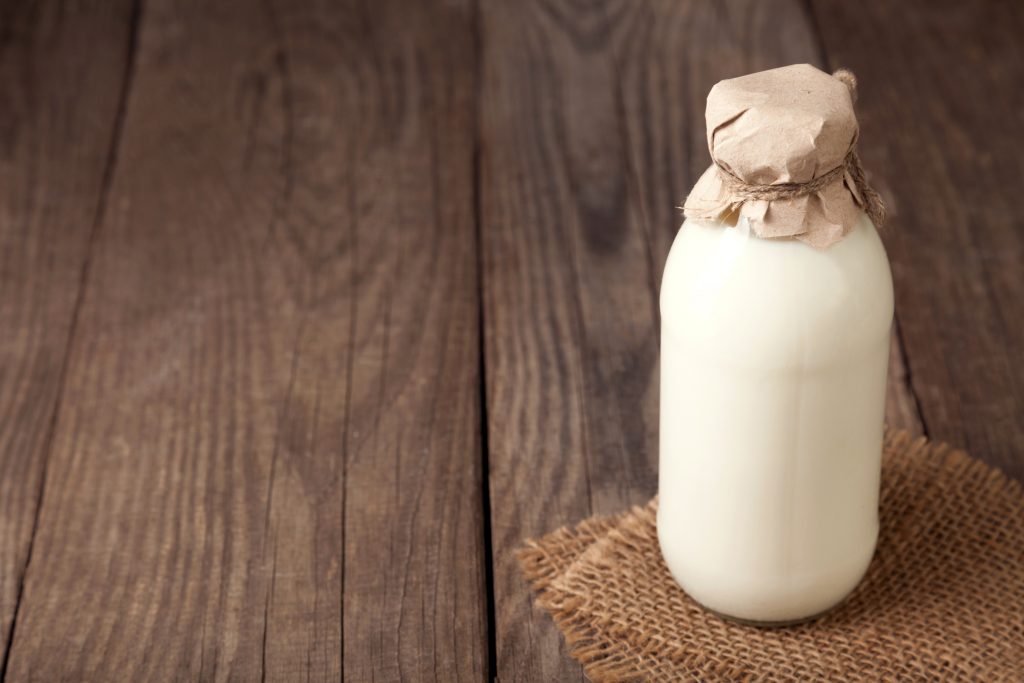Calcium Without Dairy? It’s Possible!

I often get the question “How can I get enough calcium on a dairy-free diet?” There is a lot of misconception about calcium due to the push for 3 servings of cow’s milk every day, starting from infancy. How could we possibly get our calcium needs met and protect our bones and muscles without milk…even though we are human beings and not calves?
The truth is many people have successfully followed a dairy-free diet throughout their life without suffering from osteoporosis, osteomalacia or other bone-related disorders. In fact, in Asia and Africa, people consume little to no dairy and generally do not take calcium supplements, yet their fracture rates are 50 to 70% lower than in the US.
It is just as important to get the proper amounts of a variety of other nutrients to build and maintain optimal bone density. Some of these include vitamin D, phosphorous, vitamin K, magnesium, manganese, boron, and protein. When you think of your bones, it’s just not as simple as getting enough calcium. Now don’t get me wrong. Getting the proper amount of calcium is absolutely necessary, but we need to break away from the idea that the only way to do this is through eating yogurt, cheese, and milk.
Since dairy can be inflammatory for many people and frequently causes gas, bloating and abdominal pain, we often test our patients for dairy intolerance. We then typically recommend a trial of, and sometimes complete adherence to, a dairy-free diet. If you’d like to follow this diet, here are my top 5 dairy-free, naturally calcium-rich foods you should consider eating regularly:
- Sardines with the bones (*320 mg per 3 oz.) – I bet you’re thinking “I love them,” “I hate them,” or “I’m afraid to try them”. I personally love them and many of my patients are surprised at how much they like them once they give sardines a chance. I could not say enough good things about these little fish. Low in mercury, packed with calcium, vitamin D, potassium, CoQ10, omega-3 fatty acids, protein and more, you’ll be hard-pressed to find a more nutrient-dense food. I love them on top of crackers or a bed of mixed greens drizzled with extra virgin olive oil, balsamic vinegar, and a squeeze of lemon. It doesn’t get simpler than that. I find that Wild Planet sardines are particularly delicious.
- Broccoli rabe (*301 mg per 1 cup, steamed) – Not only do you get just about the same amount of calcium in 1 cup of steamed broccoli rabe as you do in 1 cup of milk, but you also get your daily needs met for vitamins A, C, and K. Additionally, it is a great source of B vitamins, potassium, and manganese. Sauté this green beauty with some ghee, salt, and pepper, mix it in with your favorite sauce, or add it to a stir-fry.
- Mustard spinach (*284 mg per 1 cup, cooked) – Never heard of it? Otherwise known as Komatsuna, mustard spinach is a Japanese leafy green and part of the Brassica family. It is not actually related to spinach, though it makes a great substitute for spinach and you can use it in much the same way. Look for this green at ethnic and health food stores. This plant is also very easy to grow; I encourage you to try planting some seeds in your own garden!
- Collard greens (*266 mg per 1 cup, cooked) – Another brassica vegetable, collards are great for supporting the body’s detoxification and anti-inflammatory systems. There is even research to show that the sulforaphane in collards can protect the health of your gut by preventing overgrowth of H. Pylori in your stomach! It is also one of the least expensive brassica vegetables per edible cup and one of the most nutritious. I love using collard greens as a wrap, which holds up better than lettuce. If you cook them, the best method is to chop the leaf into ½-inch slices and steam for 3-5 minutes until they turn bright green.
- Canned salmon with the bones (*232 mg per ½ can) – If you aren’t a fan of sardines, you may be more likely to incorporate canned salmon into your life. In addition to the anti-inflammatory omega-3 fatty acids and concentrated protein, you are getting an excellent source of B12, vitamin D, and selenium. Canned salmon also tends to be cheaper than fresh fish and has a much longer shelf life. When choosing canned salmon, you want to look for wild caught, ideally Alaskan, in a BPA-free can to ensure the best quality.
A Special Note: one of the best ways to protect against bone loss is to engage in high impact exercise. Jump rope, run, lift weights, walk, etc. This sends signals to your body that you need to build bone!
*Nutritional data was obtained from https://nutritiondata.self.com.

